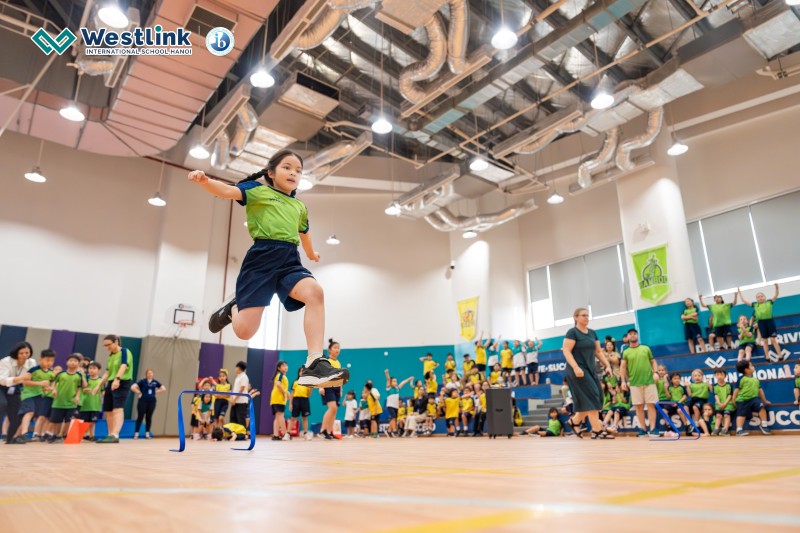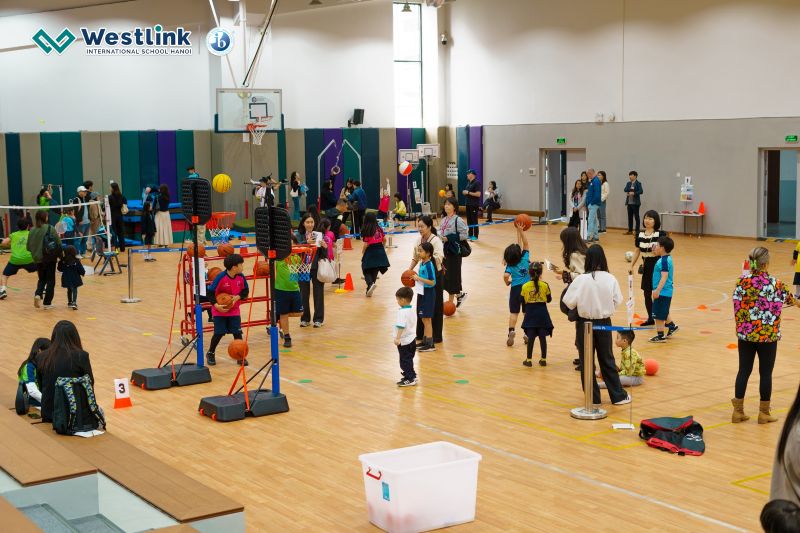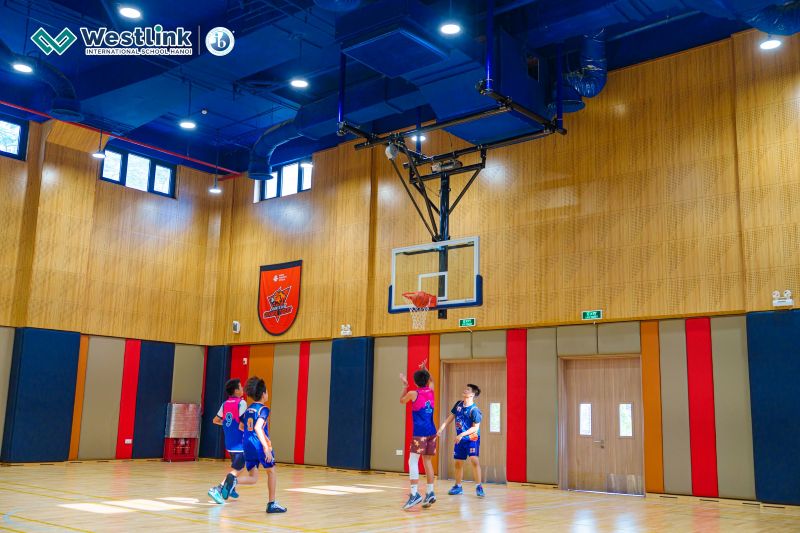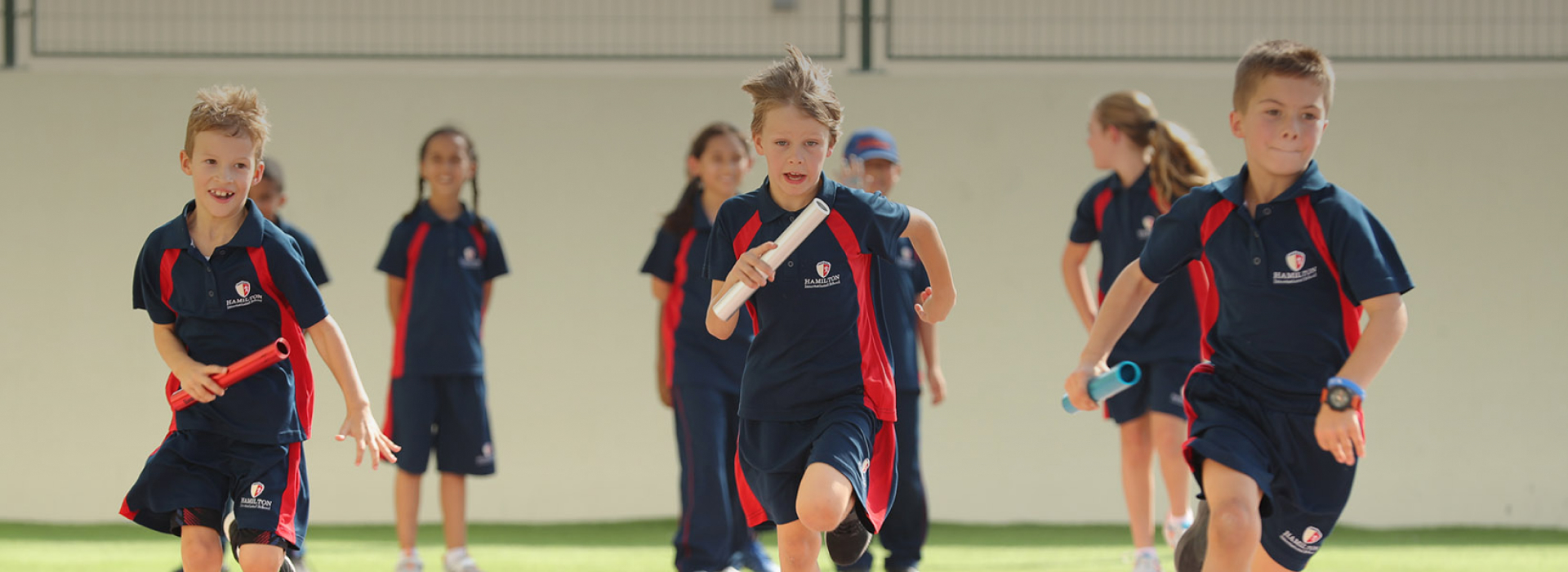In today’s world filled with challenges and stress, maintaining a healthy lifestyle through sports activities is more important than ever. Sports facilities in schools are not only places for students to engage in physical training but also play a vital role in building community, enhancing health, and promoting sustainability in education. Let’s explore why sports facilities in schools are so essential and what key elements contribute to creating an effective sports environment.

1. Why Are School Sports Facilities Important?
Sports facilities in schools play an essential role in the physical and mental development of students. These infrastructures not only help students improve their health but also serve as a foundation to develop social skills, enhance teamwork abilities, and relieve stress after intense study sessions.

Having a modern and fully equipped sports system allows students not only to improve their physical fitness but also to explore their passion for sports. These facilities can also be used to organize internal sports events, creating a more dynamic and connected student community.
2. Types of School Sports Facilities
School sports facilities can be categorized based on type and functionality. Each type of facility plays a key role in supporting students’ holistic development.
2.1 Indoor Facilities
Indoor sports facilities are enclosed areas that protect students from weather conditions. Multi-purpose courts, gymnasiums, and indoor swimming pools are commonly found in modern schools. In addition to accommodating sports such as basketball, football, and badminton, these areas also provide opportunities for daily physical activity, thereby enhancing overall health.

At Westlink International School, the indoor sports facilities are modern and fully equipped. The school features an international-standard swimming pool, state-of-the-art gyms, and multi-purpose courts catering to various sports. This creates an ideal environment for students to develop physical strength and gain well-rounded athletic skills.
2.2 Outdoor facilities
Outdoor facilities offer spacious and open environments for competitive sports like football, rugby, tennis, and athletics. Stadiums, grassy fields, and tennis courts allow students to participate in sports that require large open spaces, supporting both physical development and personal skills.

Westlink is proud to provide students with a modern outdoor stadium featuring international-standard surfaces, as well as high-quality football fields and tennis courts. These spaces are excellent for team sports and inter-school competitions.
2.3 Community and Recreational Facilities
Community and recreational sports facilities are indispensable in creating a balanced learning and living environment. Areas such as sports parks, jogging tracks, and outdoor playgrounds not only serve physical activities but also help students relax and unwind after school. These facilities form the basis for a healthy, cohesive, and joyful student community.

At Westlink, the outdoor recreational areas are not only places for physical training but also spaces for fun, creativity, and social interaction, encouraging students to stay active and healthy.
3. Sustainable Design for Sports Facilities
Designing and constructing sports facilities in schools must ensure functionality, safety, and quality, while also emphasizing sustainability and environmental friendliness.
3.1 Design Standards and Planning
Design and planning standards must ensure rational space utilization, easy accessibility, and user safety. Sports facilities should be optimized for efficient use and offer a comfortable, convenient environment for physical education and activities.

3.2 Construction Materials and Technology
The selection of construction materials for sports facilities should focus on sustainability, safety, and ease of maintenance. Using eco-friendly, recyclable materials and energy-saving designs helps minimize negative impacts on the environment. Advanced technology in construction and maintenance is also a key factor in optimizing long-term performance.

3.3 Sustainability and Environmental Friendliness
Modern sports facilities must incorporate sustainable and eco-friendly elements. Using renewable energy like solar power, water-saving systems, and minimizing emissions and waste are critical for reducing environmental harm. Green design not only protects nature but also provides a fresh and comfortable space for students.

4. Impact of Sports Facilities on the Community
Sports facilities contribute not only to the physical development of students but also bring many benefits to the community and society.
4.1 Improving Communities Through Sports
Sports facilities help communities connect, build relationships, and provide spaces for interaction and cooperation. Through sports activities, students learn teamwork, communication, and problem-solving skills effectively.

4.2 Economic and Social Impact
Besides benefiting students, sports facilities can also stimulate economic and social development by hosting events that attract community participation and support the growth of the sports industry.

4.3 Impact on Health and Fitness
Sports are a vital element in improving health and fitness. Engaging in sports helps students reduce stress, enhance focus, and prevent diseases such as obesity, cardiovascular issues, and other health problems.

4.4 Inclusivity and Accessibility
Sports facilities must ensure inclusiveness and accessibility for all students, including those from disadvantaged backgrounds or with disabilities. This helps create an inclusive sports environment that encourages every student to participate in physical activities without facing any barriers.

Building and maintaining sports facilities in schools brings benefits not only for physical development but also in creating a healthy, united, and sustainable community. High-quality and modern sports infrastructure, combined with sustainable, environmentally friendly design, will enhance education quality, support holistic student development, and contribute to building a strong and healthy society in the future.
If parents are looking for a learning environment equipped with comprehensive sports facilities, Westlink International School is one of the top choices. Explore Westlink’s academic programs and facilities below!
Contact Information
- Address: Gia Vinh Road, Tay Ho Tay New Urban Area, Xuan Tao Ward, Bac Tu Liem District, Hanoi
- Hotline: (+84) 865 777 900
- Email: info@westlink.edu.vn
Website: https://westlink.edu.vn/vi



